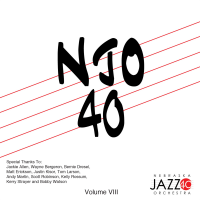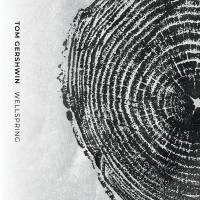Home » Jazz Articles » Album Review » The Black Butterflies: Luisa
The Black Butterflies: Luisa
Luisa, however, has sonic twists manifesting real growth, including most prominently Levi Barcourt's keyboards, usually in the form of crisp electric piano. As on "Merceditas," that glowing sonic texture nicely offsets the warm emotionalism of the leader's sax playing as well as that of the late Gato Barbieri, whose contributions here comprise his last recorded work. The near-whispered vocal on the title track here might have interrupted the luxurious atmosphere created to that point on the record if in fact it did not sound like the introduction to a deepening dreamlike state as introduced on "Hambone"/Adios Nonino" by the vibes of Karl Berger (band mate of Barbieri half-a decade ago).
In keeping with the multiple symbolic interpretations of this band's namesake insect, bandleader Figueras' playing is, in turns, insinuating and squalling, often on the same track, as happens on the homage to 'The Cat,' "Gato's Hat." Saxophonist Tony Larokko's own spirited horn interaction with her ratchets up the intensity of that cut too, while the pulsing percussion, courtesy Fred Berryhill, Bopa "King" Carre and drummer extraordinaire Kenny Wollesen, elevates the heat even further.
Figueras is a composer of no small talent, and while there are but a pair of original tunes here, Luisa showcases that virtue of hers to great effect by the juxtaposition of her originals with works from Astor Piazzolla (the aforementioned opener) and McCoy Tyner ("Love Samba"). In fact, "Brother Nacho, Sister Lola" is arguably the best cut on the album, cooking from the very outset for the whole of its five-minutes plus duration.
Virtually identical in length to the easy sway of the aforementioned jazz piano icon's number here, "Por Una Cabeza" brings Luisa to a close with some finality, but no small amount of taste and discipline either, not to mention a palpable joy that resonates long after the music stops. That latter attribute alone is the mark of a worthwhile entry into any jazz collection, but this record boasts many other virtues as well.
Track Listing
Hambone/Adios Nonino; Gato’s Hat; Luisa; Brother Nacho, Sister Lola; Merceditas; Love Samba; Por una Cabeza.
Personnel
The Black Butterflies
band / ensemble / orchestraMercedes Figueras: alto saxophone, vocals; Karl Berger: vibes, melodica; Kenny Wollesen: drums, percussion; Bopa "King" Carre: bongos, percussion; Fred Berryhill: djembe, percussion, body percussion; Tony Larokko: percussion, soprano saxophone, vocals; Rick Bottari: piano; Nick Gianni: bass; Gato Barbieri: tenor saxophone.
Album information
Title: Luisa | Year Released: 2017 | Record Label: Self Produced
Tags
About The Black Butterflies
Instrument: Band / ensemble / orchestra
PREVIOUS / NEXT
Support All About Jazz
 All About Jazz has been a pillar of jazz since 1995, championing it as an art form and, more importantly, supporting the musicians who make it. Our enduring commitment has made "AAJ" one of the most culturally important websites of its kind, read by hundreds of thousands of fans, musicians and industry figures every month.
All About Jazz has been a pillar of jazz since 1995, championing it as an art form and, more importantly, supporting the musicians who make it. Our enduring commitment has made "AAJ" one of the most culturally important websites of its kind, read by hundreds of thousands of fans, musicians and industry figures every month.


















